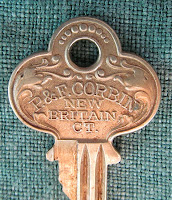I’ve always wanted a housekeeper.
For years, a group of us shared a fictitious cleaning lady named Juanita. We regaled each other with tales of Juanita’s irresponsible behaviors –cavorting with a bearded lover (in black turtleneck and beret) at a coffee cafe in town, being arrested for solicitation, taking off to Vegas where she spent days in an alcoholic stupor and gambled away all the money we had paid her for services she never rendered.
We blamed Unreliable Juanita for our messy houses, our wrinkled shirts, our unmowed lawns and untended gardens.
And then, at my 60th birthday party, my friends gave me the ultimate gift.
This is Marie.
When she arrived, she had on a floor-length black skirt and a white blouse with ruffles. She also sported a little white apron tied about her waist and an honest-to-goodness maid’s cap on her neck, secured with a murderous-looking hatpin.
The first week we had her, I scared myself to death when I walked into the kitchen at night for a glass of water; there was just enough light from the streetlight to shadow her form by the kitchen door, and I nearly launched myself through the ceiling!
But we became used to her, and started moving her about the house. People who came over for a quick cup of coffee actually began looking for her; occasionally we’d hear a quiet, “Hi, Marie!”
Then somebody offered Marie a new dress. It was a sporty, Johnny Appleseed number, white with horizontal blue stripes; we dressed her in it, added a bit of bling for good measure.
The first person through the door took one look at Marie in her classy finery and said, “Geez, Marie – nice outfit!”
It didn’t take long.
People started sending Marie clothes: long cotton skirts with peasant blouses; a poodle skirt (where on earth do you get a poodle skirt these days?) with a big, wide plastic black belt (remember those?); a cowgirl outfit, complete with fringe and a six-shooter in a holster.
She’s received jewelry and other items in the mail, including a few winter hats (useless), a pair of mittens (equally useless), a pair of duck magnets that actually stick to her lower body (which is a metal cage).
She likes to accessorize – necklaces, bad costume brooches and the like – and she’s working on a collection of campaign buttons. My favorite is a “Biker Chick” button that has a picture of a yellow chicken with black leather vest and headband!
She’s more reliable than Juanita; she never misses a day. She’s not good at much, however; certainly not cleaning, washing dishes or dusting, and she definitely doesn’t answer the phone.
But, boyoboy, she sure knows how to dress for work!








